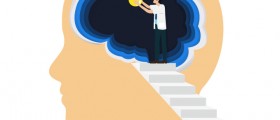
What is Down Syndrome?
Down syndrome is a genetic disorder present right at birth, which affects as many as 1 child per every 800 live births. The condition is named after Langdon Down, a doctor who first attempted to describe the disorder. Dr. Down did not identify the proper cause of the condition and it wasn`t until the late 1950`s that the genetic origin of Down syndrome was discovered. The most prominent characteristics of Down syndrome include learning disabilities, overall developmental problems and characteristic facial features as well as muscle problems. The most recognizable physical features of someone with Down syndrome include very small chins, round faces, oversized tongues and almost shaped eyes. Also, many individuals affected by the syndrome have short limbs and small muscles. Many individuals affected by Down syndrome also have other health issues such as gastro-intestinal problems, early onset of Alzheimer`s disease, heart problems and sometimes leukemia. Other health issues include ear infections which may lead to hearing loss, sleep apnea and obesity.
It should be noted that the life expectancy for children born with Down syndrome has drastically increased over the past few decades as a result of better health care and the awareness and consideration of the general public. A person with Down syndrome with a relatively stable health condition could live for 50 years or more. When it comes to the chromosomal characteristics, genes on an additional copy of chromosome 21 are to blame for the development of Down syndrome. Properly developed individuals have 23 pairs of chromosomes, with each carrying a number of genes necessary for normal functioning. Each person inherits 23 chromosomes from one parent and 23 chromosomes from the other parent. However, if there is one copy more or one copy less of any one of the chromosomes the person will suffer from mental and physical disabilities. In the case of Down syndrome, two copies of the chromosome 21 are passed on from the mother and one copy is passed on from the father making it 3 copies of the same chromosome or 47 chromosomes in total. Also, more than 90 percent of Down syndrome patients inherit one whole additional chromosome 21. Those who do not inherit an entire extra chromosome are left with additional genes from the chromosome 21 which are connected to chromosome 14 in most cases. In addition, there are instances in which an individual will inherit extra chromosome 21 genes, but not in every cell, resulting in the disorder being mosaic. Persons suffering from mosaic Down syndrome may not be as severely affected as those with an entire additional chromosome 21. Fewer intellectual disabilities as well as muscular difficulties are observed in the cases of mosaic Down syndrome. In some rare instances, such type of the disorder may not even be diagnosed or observed in an individual. In addition, Down syndrome screening for pregnant women is widely available so prospective parents will know if their unborn child might have the condition.
What is the Cognitive Deficit in Down Syndrome?
One of the most prominent characteristics connected to Down syndrome is cognitive disability. In affected persons the cognitive development is delayed while some form of learning difficulty follows the person through his or her entire life. Although the genetic anomalies which lead to Down syndrome are understood the way in which the extra genes or the entire extra chromosome 21 affect cognitive abilities is not completely clear. Individuals with Down syndrome have brains which are on average smaller than those of their non affected counterparts. Researchers have also discovered differences in their hippocampuses and cerebellum. Hippocampus is the area of the brain responsible for memory and learning. Other characteristics of Down syndrome include communication and language difficulties. Also, hearing loss is observed in some instances as well as middle ear issues. Language skills training at an early age coupled with hearing aids has been successful in developing better communication abilities. Non verbal communication, such as body language, is also taught through special programs. It should be noted that in many countries children with Down syndrome are not schooled with normally developing pupils. It is postulated that their social and emotional development differs from that of the non Down syndrome peers so the age between the two groups of students is too wide to benefit anyone. Mainstream schooling is therefore only possible if the curriculum is somewhat modified to meet the abilities of everyone. Further, most clinicians agree that at birth it is difficult to predict the abilities a child with Down syndrome will have. Each child is different and has to be assessed and evaluated individually. Also, learning problems found in Down syndrome children are often observed in persons without the condition as well. In other words, Down syndrome individuals and their parents have a wide range of means at their disposal, such as special school programs or community meetings.
















Your thoughts on this
Loading...